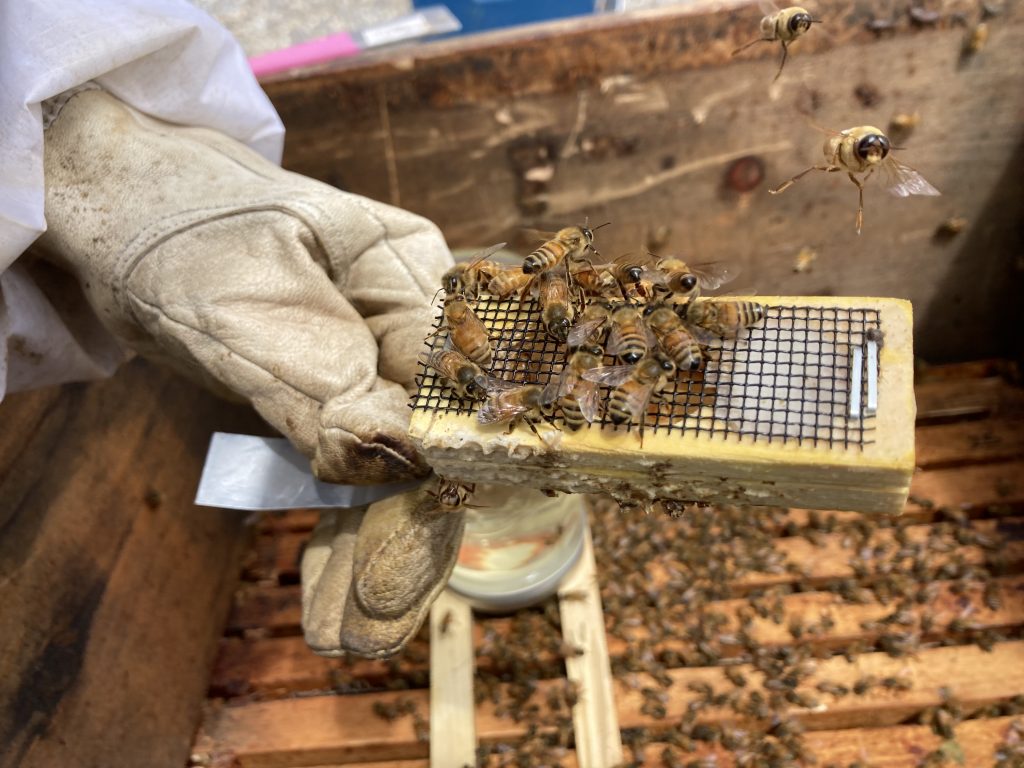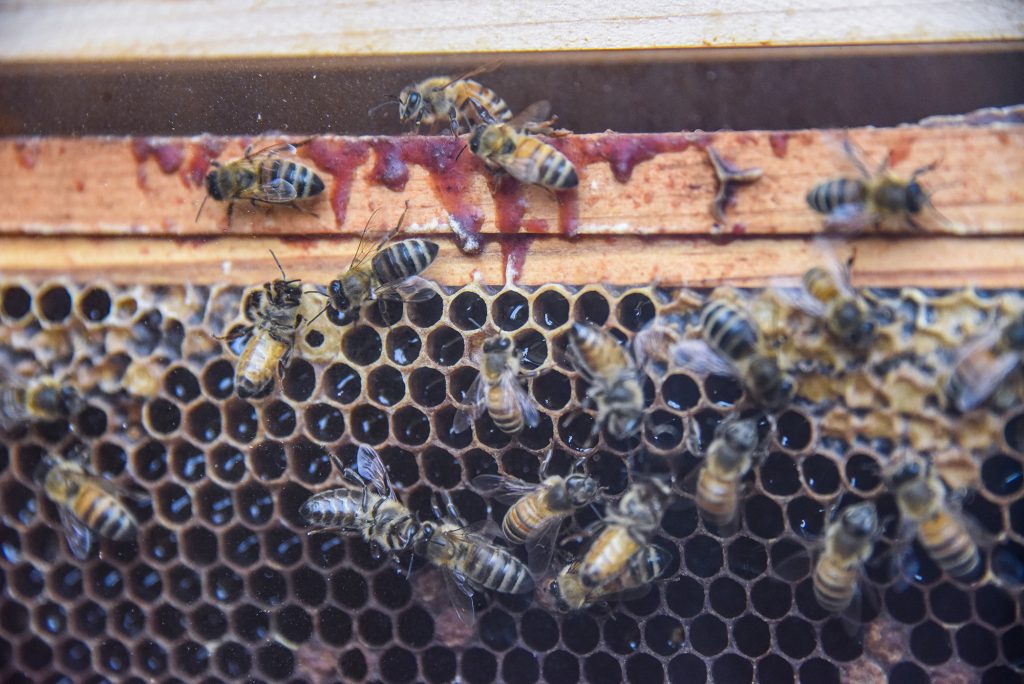Hi there–as this summer’s beekeeping interns, we thought we’d give you a bird’s eye (or bees’ eye) view of our first few weeks on the job.
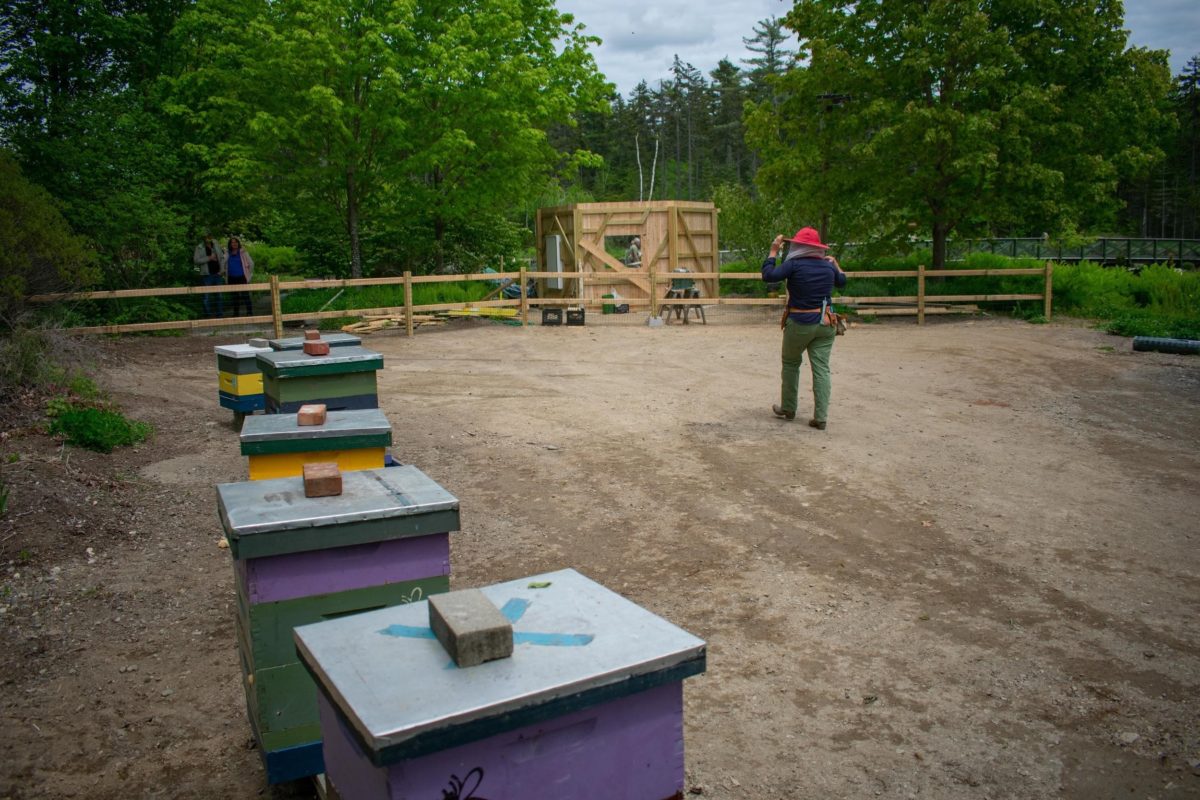
The hives in their new home at CMBG. You can see the apiary sign is still under construction in the background, and Erin is going to chat with some curious visitors. Observation, questions, curiosity, and education are what this apiary is all about!
Jade:
The first few hives have made the trip up from Erin Forbes’ farm in Portland to settle into their new home at the Gardens. While the learning apiary exhibit is still a work in progress, the bees behind it are already flying.
While the Gardens has been keeping hives for the past few years, this is the first time the hives will be available for public viewing. They are in a beautiful, sunny spot just past the pollinator gardens flanking the butterfly house. Be sure to check out the observation hive, and watch the bees bring back nectar and pollen from the plants all around the Gardens.
While the bees mostly take care of themselves, we have helped them out a bit. Because, seasonally, its ten days ahead of Boothbay, our bees have been in Portland for the past month, growing and becoming more active before heading up to Boothbay. This ten-day head start allowed them to start gathering pollen earlier, otherwise we would have to have fed them a sugar-water solution to keep them active and alive.
Our goal with the apiary exhibit is to educate our guests about pollinators and how to properly take care of honey bee colonies. We want to capture the interest of the next generation of beekeepers through interactive engagement.
Marianna:
Both Jade and I have honey bee and beekeeping experience, but working with a Master Beekeeper like Erin gives us an unparalleled education in the field. We are also gaining experience in educational outreach, networking, and business strategies. This apiary will help visitors learn about honey bees, observing them up close while watching beekeepers work from a comfortable distance. It will also provide the opportunity for other beekeepers to come and see how we work and learn new skills. This learning apiary will be a hub of information exchange, learning, engagement, and wonder!
Bringing up the bees from Portland has been nothing short of an adventure. There were challenges, and many strange looks on the highway, but unloading the first of the hives in their new apiary was so exciting. Our work in Portland included installing new packages of bees (Image 1) and nucs (that’s a beekeeping abbreviation for a bee nucleus, or a mini hive used to start a new bee colony; Image 2), maintaining the CMBG hives we already had, and preparing to move everything up to Boothbay! We gave our new bees homes in larger hives and lots of honey and pollen to get them started.
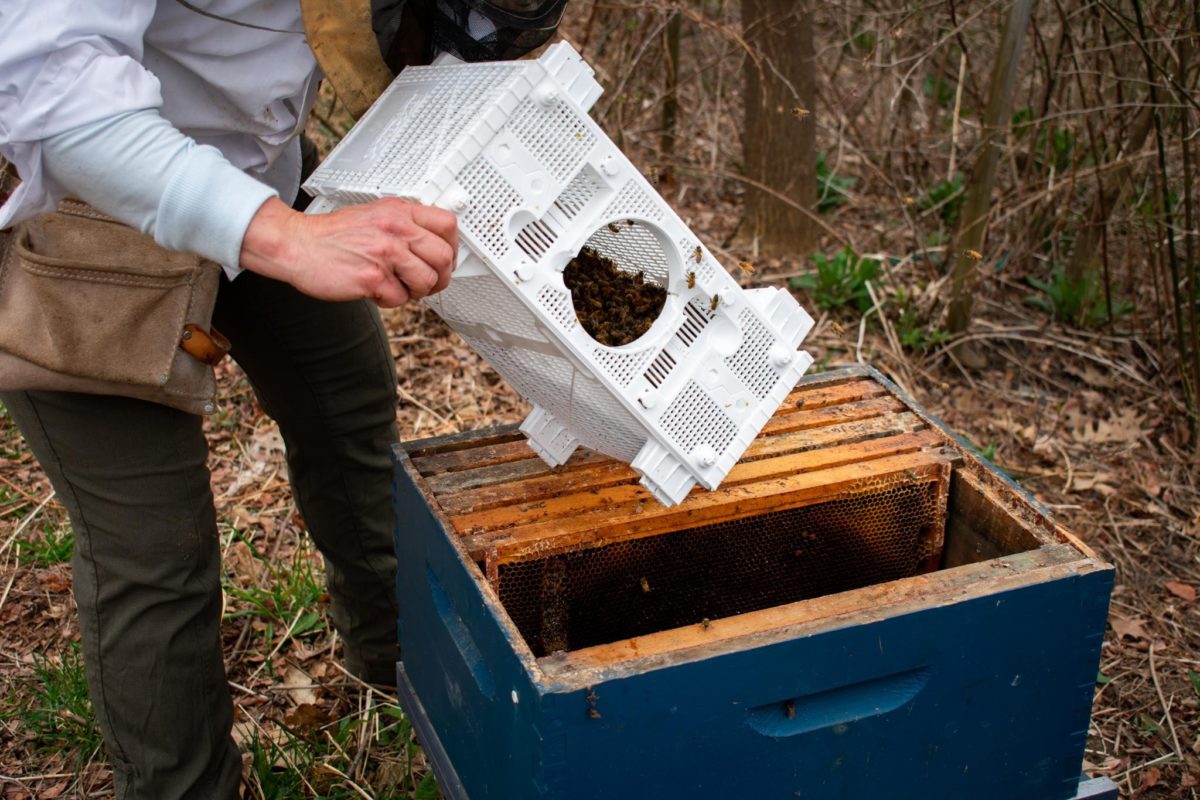 Image 1. Installing a package of bees (three-pound boxes of bees with a queen). These boxes come without frames, so we make some space inside a hive and dump the bees in! It seems strange but the bees are immediately attracted to the wax and are happy to be in their new home; after all, it’s been perfectly made just for them!
Image 1. Installing a package of bees (three-pound boxes of bees with a queen). These boxes come without frames, so we make some space inside a hive and dump the bees in! It seems strange but the bees are immediately attracted to the wax and are happy to be in their new home; after all, it’s been perfectly made just for them!
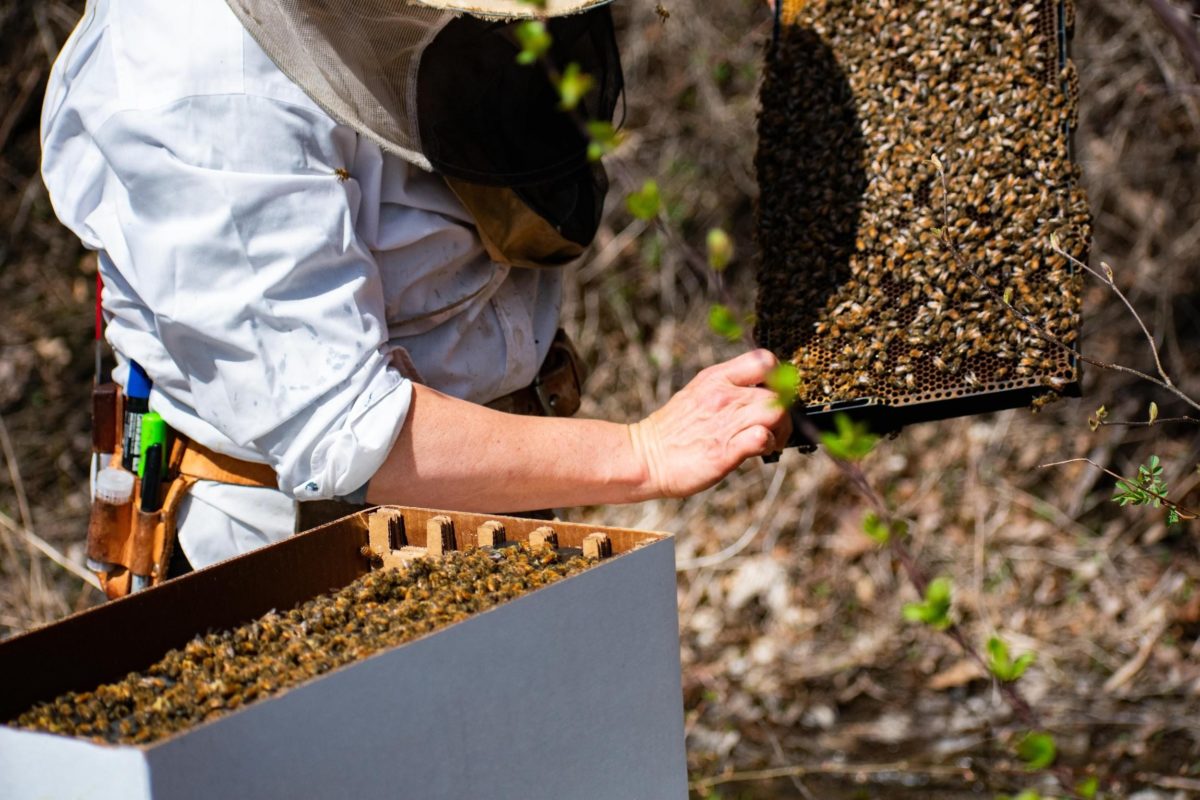 Image 2. Inspecting a nuc before installing (a small hive on five frames with a queen). Erin is inspecting each frame to make sure the bees are healthy and happy. She is looking for eggs and brood, both signs of a healthy queen.
Image 2. Inspecting a nuc before installing (a small hive on five frames with a queen). Erin is inspecting each frame to make sure the bees are healthy and happy. She is looking for eggs and brood, both signs of a healthy queen.
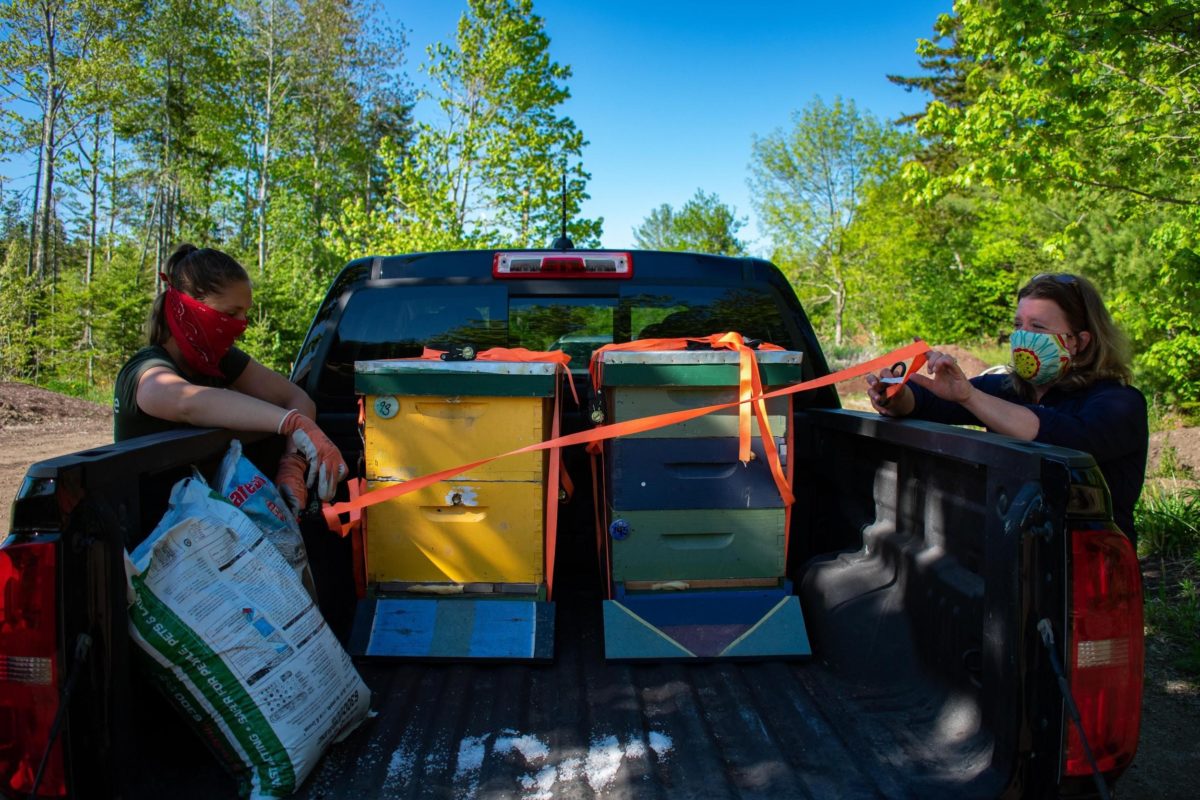 Image 3. Erin and Jade unloading the hives at the CMBG Learning Apiary.
Image 3. Erin and Jade unloading the hives at the CMBG Learning Apiary.
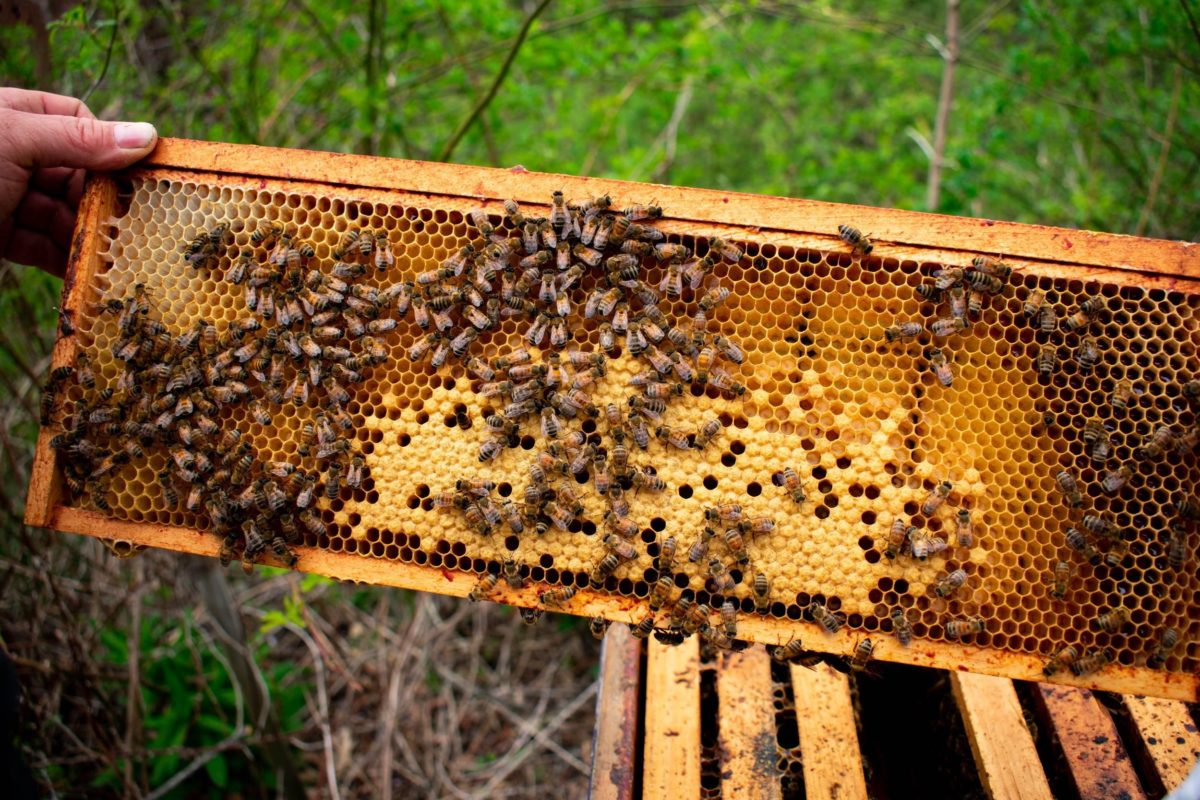 Image 4. A frame of honey bees. This frame has brood, baby bees, in the center and some nectar, soon to be honey, on the edges. The cells that are closed have baby bees pupating inside, they’ll soon hatch and become fully grown worker bees!
Image 4. A frame of honey bees. This frame has brood, baby bees, in the center and some nectar, soon to be honey, on the edges. The cells that are closed have baby bees pupating inside, they’ll soon hatch and become fully grown worker bees!
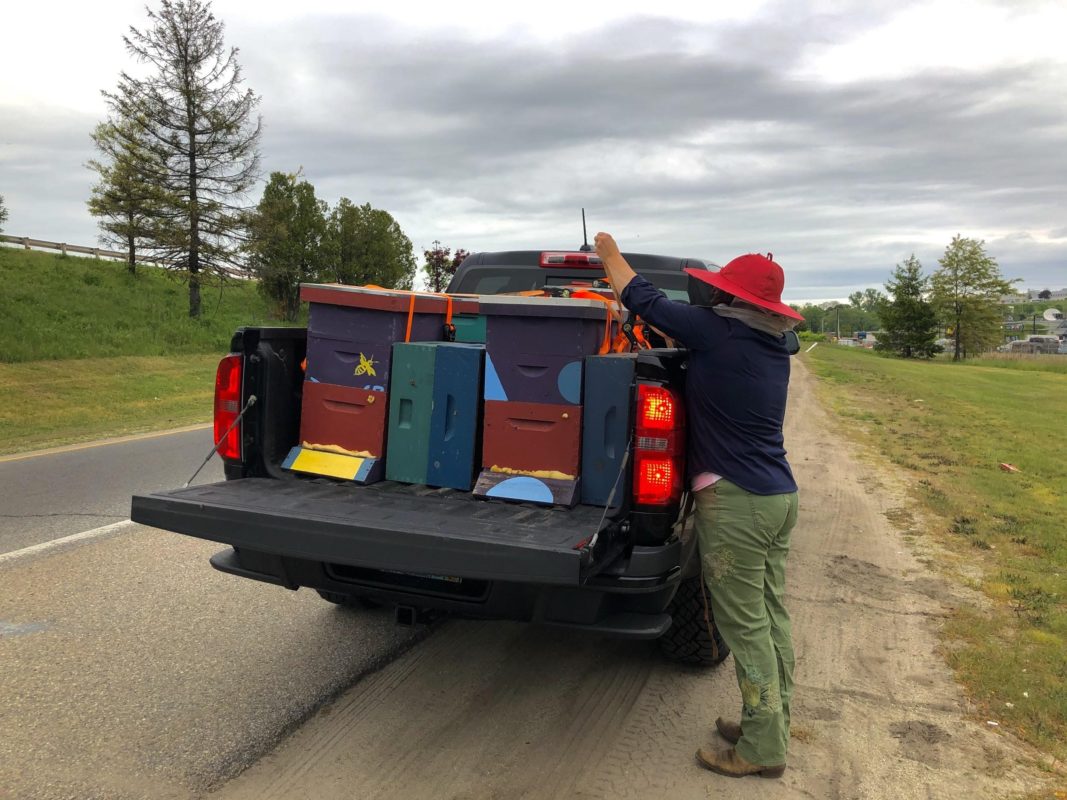 Image 5. Quick fix on the side of the highway. The hives were tipping over and there were bees flying everywhere! Erin had to come rescue me (Marianna) with more materials to wedge them tight. Once they were secure, I brought them up to Boothbay!
Image 5. Quick fix on the side of the highway. The hives were tipping over and there were bees flying everywhere! Erin had to come rescue me (Marianna) with more materials to wedge them tight. Once they were secure, I brought them up to Boothbay!
